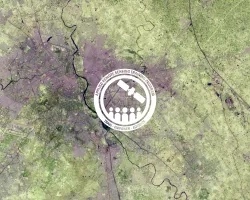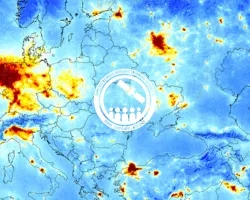Description
March 15, 2017 - March 29, 2017
Air pollution caused by particles with a diameter of 2.5 microns or less (PM2.5) can reduce visibility and adversely affect human health. As a result, the United Nations has addressed this type of pollution in the 2030 Agenda for Sustainable Development.
Recently, annual mean PM2.5 maps have been developed using MODIS, MISR, and SeaWiFS observations from 1998-2015 and have been used by organizations, such as the World Health Organization (WHO) and Greenpeace, to assess global air quality and health impacts. In this webinar, participants learn how to use this database to analyze PM2.5 over cities using satellite observations. This training covers data access, analyzing long-term trends, and combining PM2.5 and population datasets to understand long-term exposure.
- Complete Session 1 of Fundamentals of Remote Sensing or equivalent experience
- Complete Sessions 1, 2, and 4 of Satellite Remote Sensing of Particulate Matter Air Quality
- Download and install QGIS and all accompanying software
- Use this Downloading and Installing QGIS exercise for help (Para descargar e instalar QGIS)
- This training will use QGIS software, and although previous experience with this software is not required, some experience with geospatial software will be helpful. We strongly recommend you open QGIS and ensure the software is working prior to starting the webinar.
- Download the gridded WHO datasets by country
- List of Relevant Tools & Data Portals
Attendees will:
- Become familiar with the UN Sustainable Development Goals, as well as the satellite observations of air quality that are used to calculate indicators 3.9.1 and 11.6.2
- Learn about PM2.5 estimates made using satellite, surface, and model datasets
- Understand how to use the 2014 WHO data set and access the indicator data for a city or country
Agencies involved in addressing and reporting on United Nations Sustainable Development Goals (SDGs), as well as, local, regional, state, federal, and international organizations interested in assessing PM2.5 air quality.
- Three 1-hour sessions
The goals, targets, and indicators of the UN sustainable development goals; the satellite observations of air quality that are used to calculate indicators 3.9.1 and 11.6.2; how satellite observations can fill in the gaps; and methodology and applications.
English:
Spanish:
PM2.5 estimates using satellite, surface, and model data sets for 2014, released by the WHO; how the data applies to indicators 3.9.1 and 11.6.2; and methodology, limitations, and data access.
English:
Spanish:
Using the 2014 WHO data set, read and convert the data for a region of interest, complete a mapping exercise, perform a case study analysis on spatial pattern comparisons for different cities, and learn to apply all the skills learned to create a time series once more data becomes available.
English:
Spanish:



